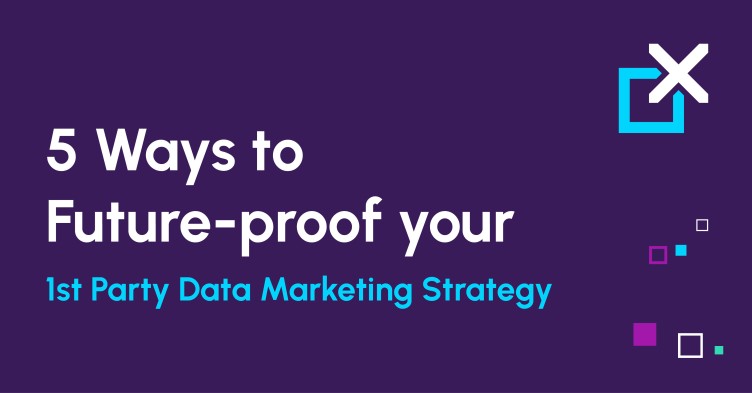By now, marketers and advertisers (and hopefully their wider teams/business units) are aware that the way in which they obtain and utilise data about customers online is about to change. The end of 3rd party data, and a cookie-less world, means that the landscape has shifted to using a 1st party data marketing strategy and leveraging your current customer base. It’s a big change – but one that should ultimately result in safer, more privacy-focused data exchanges, as well as the opportunity to now really connect with audiences through highly targeted messaging.
It also means taking the time to redevelop marketing strategies to incorporate and leverage the use of 1st party data, and try to gain a competitive advantage by getting on the front foot. To help implement a robust, future-proof marketing strategy, Google have highlighted 5 areas to focus on:
1. Tailor to customer objectives
It’s nothing new for a 1st party data marketing strategy to start with understanding both business and marketing-specific objectives, and mapping actions to deliver against these. In the case of 1st party data, setting objectives will also identify what data is critical to gather, determine and validate the cost of acquiring this data, and make sure the right governance is in place to do so.
2. Offer value exchange for data
Customers want organisations to be transparent about how and what they use their data for, and similarly want to feel they get something out of the exchange as well. Our Customer Data Platform, Wondaris, produced a great article on providing value to entice customers to share their data. Perception of ‘value’ can vary across audience segments, however the article highlights a number of commonly used methods that result in a successful exchange of data, including:
- Discounts for account registrations / subscribing to a newsletter
- Whitepapers or free trials (in a B2B setting)
- Loyalty programs, particularly those with tiered loyalty levels (usually based on spend amount). This might also tie in with VIP notifications around sales or special offers
- Lead generation in the form of giveaways/competitions (that don’t require a purchase)
- ‘Loyalty’ points for online interactions with the brand’s channels to put towards future purchases
3. Invest in tech and organisational enablers
As an organisation, 1st party data is owned by you. Key to the successful acquisition of this information from customers is trust in the business and that the data will be handled responsibly. As part of putting those internal capabilities in place, marketers and advertisers should look at investing in technology platforms to help them get the most out of the data. Utilising tools such as a Customer Data Platform (CDP) to simplify and centralise data from all customer touchpoints makes for a much easier, highly informed, and successful 1st party data strategy roll-out. In addition, establishing a single view of the customer delivers more accurate analysis and attribution and enhanced omni-channel personalisation at scale.
In many instances, it is simply not practical for organisations to build large marketing and data teams in-house. In such cases, they can gain significant benefits from working with strategic partners whose deep expertise in data can help them fill any knowledge gaps. (Talk to us if you’d like to better understand how this type of partnership could work in your organisation).
4. Test and learn
Given the ability to use 1st party data for tailored, personalised messages across multiple channels, understanding what works, where, and with what audience is pivotal for success. Testing to assess what methods perform and get the best value out of the data is more likely to achieve business objectives (from Point 1), than a once-off scatter-gun approach. Utilising tools such as Google Customer Match will not only help test personalisation for current customers but also provide opportunity to expand an organisation’s potential audience.
5. Refine and validate
From testing to understand what works, we now come to measuring outcomes to prove ROI. Not only is it important to validate the activity that has been undertaken, this step also allows marketing teams to develop key insights and adjust where necessary – both at the campaign level as well as the overarching data strategy.
There’s lots to consider when it comes to rolling out a 1st party data marketing strategy – it’s an exercise in change management from both a strategic and tactical perspective. Whilst the execution falls in the hands of marketers, the 1st party data landscape is something that organisations as a whole need to be aware of to some degree; to understand its implications, and where required, provide support to drive success.
For more information on how to design and implement a first-party data strategy download our whitepaper here or book in to speak to a member of the XPON team.
As a full-stack Google Marketing Platform & Google Cloud Partner, XPON Technologies AUNZ can help to make this inevitable transition as painless as possible.
